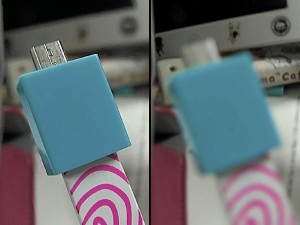When it comes to cameras, I truly adhere to photographer Chase Jarvis’s philosophy: The best camera is the one that you’re always with. Since I’m rarely without my phone, it has also become my default camera. However, I am still plagued with photo envy whenever I see friends upload gorgeous photos taken with their souped-up cameras, except I don’t have the patience to lug around a heavy camera—and not a pink one at that.
I was still praying to the camera gods to bring forth a cute, powerful camera and when the Lytro came out I thought that it was the answer I was looking for.
The science
The Lytro wasn’t a camera of whimsy. It is a gadget that emerged out of over 15 years of light field research, light field being the amount of light traveling in every direction through every point in space.
The Lytro camera promises to record this via a light field sensor, allowing the lens to work in tandem with it and the software algorithm to produce a photo that lets you refocus after taking the photo right on the camera’s small screen, on your computer and online.
The Lytro’s light field sensor captures 11 million light rays, and comes with an 8x optical zoom and a constant f/2 aperture lens throughout the zoom range.
Currently Lytro comes with built-in, non-expandable memory of either 8GB or 16GB. The photos on the site were truly amazing, so amazing that I found myself on the preorder list as soon as the site allowed it.
Forget crappy photos or missed moments, with the Lytro’s refocusing feature, your photo will be dynamic, interactive and most importantly, foolproof.
The reality
Still, the camera decreased my margin of error significantly blur-wise, a big plus for those planning to shoot hyperactive children or frisky dogs.
Outdoors, it does beautifully, capturing vibrant colors and sharp images. However, be prepared for a long wait when uploading photos to your computer—the Mac-only software (for now) is still so clunky that uploading and converting will take forever and a half.
Make sure to utilize the favorites feature on the camera—marking a photo with a star will move it up to the uploading queue, giving you quicker access to photos you want to share on social networks.
Lytro underperforms in low-light conditions, with the photo registering noise equivalent to substandard camera phones. Forget printing your best shots in poster sizes, the maximum resolution output is at 1080×1080 which are only good for 5×7 prints. Though the interactive photos are saved in Lytro’s proprietary format (.lfp), it is possible to select focus and export the photo as a .jpg file.
The verdict
When previews of the Lytro first came out, I thought that it, plus the iPhone 4S’s camera, would be enough for me that I would be able to eschew bringing a digital camera when traveling or attending work events, but given the Lytro’s limitations, it was like buying a very cool toy camera.
It’s a nice addition to your camera lineup, and best for detail shots (the square format doesn’t make for great landscape photos, naturally).
For a first iteration, the Lytro is still a fantastic gadget—the minimalist controls, box tube design and concept are striking and the interactive photos will add interesting depth to your blog or website.
There are still kinks that need to be fixed, but overall, not bad for the first roll out. In the meantime, I shall resume my prayers to the camera gods for that cute, powerful camera.
Lytro is available via www.lytro.com
